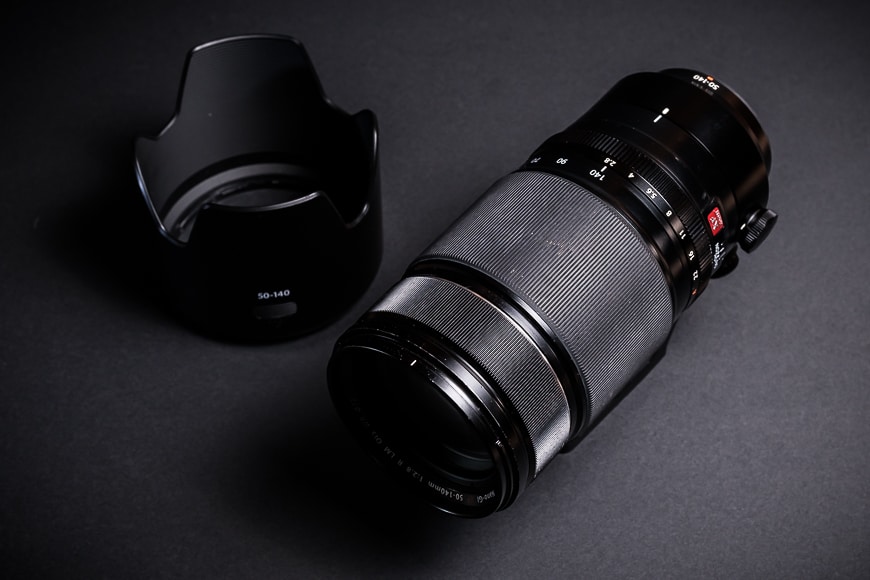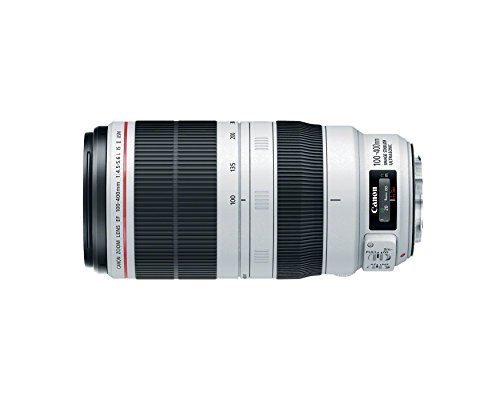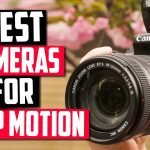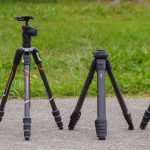The right lens on your camera can make a huge difference where image quality is concerned. As a beginner, it can be difficult to make your way through prime lenses that will provide you the best results, especially when you’re looking into the best lens for sports photography for Canon cameras.
Which Canon Lens Is Best For Sports Photography?
Before we elaborate on how to get a superior telephoto zoom lens for sports photography, we must make a distinction between professional cameras and hobby cameras. If you are not a professional, you can save loads of money by choosing some of the hobby options we will mention today.
On the other hand, professional sports photographers could benefit from expanding on their existing collection of prime lenses by checking out the expert Canon telephoto zoom lens recommendations for outdoor and indoor sports.
1. EF-S 55-250mm f/4-5.6 IS STM
The best telephoto lens for Canon is always the one that matches your skill level. Fortunately, the brand often creates zoom lenses that are designed for a specific skill level. For beginners, there are a variety of zoom lenses to consider. That being said, the EF-S 55-250mm f/4-5.6 IS STM might be the easiest to use.
EF-S 55-250mm f/4-5.6 IS STM telephoto zoom lens is often referred to as the entry lens for sports photography. While it is a prime lens with lots of features, it is relatively inexpensive and teaches many beginning sports photographers the basics of sports photography.
While the previous sports lens models proved a little inferior in terms of image quality, this is not the case for the EF-S 55-250mm f/4-5.6 IS STM lens. The sports lens comes with a better optical design. The overall image sharpness over most of the focal range is quite excellent as well, something that is not always the case with majority of zoom lenses. The design itself also includes an image stabilizer, which enables you to reduce background blur.
Despite being a more affordable and less elaborate version of the Canon prime lens, this sports lens does provide a good focal length range. However, it is worth noting that this sports lens is only compatible with APS-C format EOS DSLR cameras from the same brand.
Sale 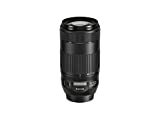 Canon EF 70-300mm f/4-5.6 IS II USM Lens
Canon EF 70-300mm f/4-5.6 IS II USM Lens
- Canon EF 70-300mm f/4-5.6 IS II USM Lens
- Front-focusing method with helicoid ring drive
- No deductibles or hidden fees. Free shipping on all repairs. Fully transferable.
- Plan contract will be emailed from Asurion within 48 hours of purchase. This will not ship with your product.
2. EF 70-300mm f/4-5.6 IS II USM
Professionals and advanced sports photographers can take it up a notch with this lens. The EF 70-300mm f/4-5.6 IS II USM is a long camera lens and often referred to as the best zoom lens for Canon by many professionals.
As you may have guessed, the EF 70-300mm f/4-5.6 IS II USM lens is a little more expensive than our previous suggested sports lens. However, when you see the amount of features and improvements this lens is associated with, you will immediately notice why this lens is so popular among sports photographers.
The EF 70-300mm f/4-5.6 IS II USM lens was designed as a replacement for the original EF 70-300mm f/4-5.6 IS lens. The new design caters hobby photographers, but also professionals. It features a long telephoto lens that can be used in countless environments; this goes from snapping shots at an indoor sports event to catching local wildlife on camera.
Interestingly, the EF 70-300mm f/4-5.6 IS II USM lens is compatible with both APS-C and full frame cameras. If you decide to use this lens on an APS-C, you can count on a focal length of 112-480mm. This still provides you with a great focal length and excellent zoom range.
It is worth pointing out that the EF 70-300mm f/4-5.6 IS II USM lens comes with ultra-low dispersion technology or UD, and optical image stabilizer, and quick auto focusing speeds. Because of these technologies, you can count on a lens with a reduction in chromatic aberration, background blur reduction, and easy use.
Sale  Canon EF 70-300mm f/4-5.6 IS II USM Lens
Canon EF 70-300mm f/4-5.6 IS II USM Lens
- Canon EF 70-300mm f/4-5.6 IS II USM Lens
- Front-focusing method with helicoid ring drive
- No deductibles or hidden fees. Free shipping on all repairs. Fully transferable.
- Plan contract will be emailed from Asurion within 48 hours of purchase. This will not ship with your product.
3. EF 100-400mm f/4.5-5.6L IS II USM
This is without a doubt the highest priced lens in our overview today, but you do get a bunch of features in return. This particular option guarantees image quality for both outdoor and indoor sports, but also provides countless applications for other types of photography.
The EF 100-400mm f/4.5-5.6L IS II USM lens is mainly used by professionals because of its higher price. Nevertheless, you do get some professional features with it. As always, let’s take a look at the focal range of this sports lens first.
With the EF 100-400mm f/4.5-5.6L IS II USM, you can count on a steady focal range for all your professional sports shots. Its range starts at 100mm and goes all the way to 400 without the need for extenders. Because of the range, you can use this for sports photography, but also for portraits and wildlife photography.
Note: here are some of our favorite tripods for wildlife photography.
Image stabilization is certainly needed for this kind of lens, especially when snapping sports photographs. Fortunately, there is sufficient image stabilization that secures your image quality. It basically provides you two modes for stabilization. Mode one is the Standard IS and will not be used for sports photography that often. After all, the standard mode is best used for stationary subjects. However, mode two will be especially useful for capturing outdoor and indoor sports subjects, as it provides tracking of a linear moving object.
When you choose the EF 100-400mm f/4.5-5.6L IS II USM lens, you can also count on their new IS mode; this is only provided with a so-called super telephoto lens. It ensures compatibility with applicable shutter speeds and follows weirdly moving subjects without much difficulty. The overall design of the IS mode has also proved useful to stabilise in low light.
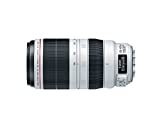 Canon EF 100-400mm f/4.5-5.6L IS II USM Lens, Lens Only
Canon EF 100-400mm f/4.5-5.6L IS II USM Lens, Lens Only
- Compact, high performance L-series super-telephoto zoom makes it ideal for sports and wildlife photography
- Rotation-type zoom ring allows for more precise composition and excellent balance when handholding
- Improved zoom torque adjustment ring allows easy setting of zoom tension, Focal Length & Maximum Aperture:100-400mm 1:4.5-5.6, Closest Focusing Distance-3.2 ft. / 0.98m
- New Air Sphere Coating (ASC) helps to significantly reduce backlit flaring and ghosting, Highly resistant to dust and water, and amazing durability enabling shooting even in harsh conditions
- German (Publication Language)
Which Lens Is Best For Sports On Canon?
We already looked at the recommended lenses for outdoor and indoor sports, but also at lenses that can handle additional photos such as wildlife and portraits. So, which lens is the best for sports in general? Well, let’s just say there is one ultimate option you could consider.
When you are looking for a lens that can be used for indoor sports, but also a lens that could handle low light environments, you should definitely consider the EF 70-200mm f/2.8L IS II USM lens. The EF 70-200mm f/2.8L IS II USM lens costs a little more than some of the previous options, but once again its reliability for sports surroundings and low light environments is unmatched. The lens delivers unmatched image quality, a lightning-fast focus, four-tiered image stabilization and a great focal length.
Sale 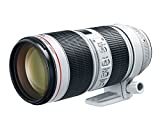 Canon EF 70-200mm f/2.8L IS III USM Lens for Canon Digital SLR Cameras, White – 3044C002
Canon EF 70-200mm f/2.8L IS III USM Lens for Canon Digital SLR Cameras, White – 3044C002
- Constant f 2.8 Maximum Aperture throughout Entire Zoom Range.
- Canon’s Air Sphere Coating (ASC) Minimizes Ghosting and Flare.
- Optical Image Stabilization at up to 3.5 Stops of Shake Correction.
- Fluorine Coating on Front and Rear Elements to Help Reduce Smears and Fingerprints.
- Highly Resistant to Dust and Water, and Improved Durability Even in Harsh Conditions. Inner Focusing System with Ring Ultrasonic Motor. Full-time Manual Focus. One Fluorite Element and Five UD Elements for High Image Quality. Minimum Focusing Distance of 3.9 feet, 1.2 meter. Diagonal Angle of View: 34° – 12°
Please note that if you are looking to improve image quality, but do not have the funds for the EF 70-200mm f/2.8L IS II USM lens, you could consider the previous version of this lens as well, the EF 70-200mm f/2.8L USM. This option can improve image quality greatly, but does not cost as much as versions II and III.
Finally, if you are searching for close action pictures with superior image quality, you could consider the EF 24-70mm f/2.8L II USM lens. Once again, this is a great option for indoor sports photography. With this option, you will get handy features such as additional resistance to moisture and dust, but also a manual focus override and a special lens coating that minimises ghosting.
Which Canon Camera Is Recommended For Sports Photography?
There are plenty of options from this brand and they all have some amazing features to offer. So, how do you make a decision to ensure superior image quality with so many options to choose from? Let’s take a closer look at the popular cameras and how they contribute to better image quality so you can make a more informed decision.
1. EOS 80D
The EOS 80D is designed to be reactive to fast movement, enabling you to take those action shots without much trouble. It has an overall shooting rate of 7 fps and comes with its own 24.2 MP sensor.
We must mention that the EOS 80D has lots of customisable buttons as well, which is always interesting for those who want to take their photography to the next level. The camera body also has a Viewfinder, enabling you to experiment with AF points, AF mode, horizontal electronic levels and more.
With the EOS 80D, you can also enjoy Canon’s characteristic shutter speeds. Your image quality will also benefit from the 24.2 megapixel CMOS sensor, which will capture high-resolution images flawlessly.
Sale 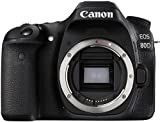 Canon Digital SLR Camera Body [EOS 80D] with 24.2 Megapixel (APS-C) CMOS Sensor and Dual Pixel CMOS AF – Black
Canon Digital SLR Camera Body [EOS 80D] with 24.2 Megapixel (APS-C) CMOS Sensor and Dual Pixel CMOS AF – Black
- The EOS 80D camera’s Intelligent Viewfinder helps bring the thrill of SLR photography with each use
- The Intelligent Viewfinder displays AF points and AF mode, has a grid display, a horizontal electronic level, plus numerous other points of information
- For next level AF operation, the EOS 80D camera has a wide area, 45 point, all cross type AF system with low luminance performance to EV 3 and 4 types of AF area selection modes
- The 242 Megapixel (APS C) CMOS sensor captures high resolution images and has refined individual pixels that enable high ISO speeds (16000 for still photographs, 12800 for movies)
- Use the EOS Utility Webcam Beta Software (Mac and Windows) to turn your compatible Canon camera into a high-quality webcam
2. EOS 7D Mark II
Another great option for enthusiasts who want a decent full frame camera, and do not mind spending just a little more for better image quality, is the EOS 7D Mark II. This camera is built to provide top speed, as you can shoot those action moments at 10fps, accompanied by a 65-point autofocus. It basically enables you to transfer all that real-life energy to a photograph by capturing it with your lens.
The quality that the EOS 7D Mark II provides is undeniable, no matter which of Canon’s lens options you use. The camera has a 26.2 megapixel sensor and an incorporated DIGIC 7 image processor. On top of that, your image quality will also benefit from an incredible ISO range from 100-40000.
In addition to the benefits in terms of photographs, you will also find that the EOS 7D Mark II is more durable than some of the previous models. Even though it does not weigh loads, it’s design is made to stand the test of time. You can also count on an incorporated wireless connection, so you can immediately upload those valuable shots.
Sale  Canon EOS 6D Mark II Digital SLR Camera Body, Wi-Fi Enabled
Canon EOS 6D Mark II Digital SLR Camera Body, Wi-Fi Enabled
- 26.2 Megapixel full frame CMOS sensor
- Optical viewfinder with a 45 point all cross type AF system. Compatible Lenses: Canon EF lenses (excluding EF S and EF M lenses)
- Dual Pixel CMOS AF with phase detection and Full HD 60p
- DIGIC 7 Image Processor, GPS, Wi-Fi, NFC and Bluetooth low energy
- Vary angle touch screen, 3.0 inch LCD
3. EOS-1D X Mark II
Professional photographers tend to go for the EOS-1D X Mark II to get their action shots. While it is considerably more expensive than the other camera bodies mentioned above, there is a valid reason for that.
The EOS-1D X Mark II is almost a legend amongst photographers. The camera body sports a shooting speed up to 14 fps, although this can be pulled up even further to 16 fps with its Live View Mode. In other words, this camera body stands for precise performance as well as incredible speed.
Variable lighting conditions are not a problem for the EOS-1D X Mark II either. The camera body has proven to provide detailed results in low and high light environment, and this is undoubtedly due to the presence of the full-frame CMOS sensor. By providing a high pixel count in low-light environments, your results will improve dramatically with a minimal amount of equipment.
And it gets even better! The EOS-1D X Mark II has the ability to capture cinematic video as well. In fact, it is able to capture 4K video up to 60 fps, which can be done with one of the CFast cards.
The performance of the EOS-1D X Mark II can also be explained through the presence of the dual DIGIC 6+ image processors. These processors will take the light that comes through the sensor and convert them into your photographs. Of course, it does more than that alone, because it also increases the performance of your camera overall. With a higher processing speed, 16 fps operation, and even corrections of lens distortion and diffraction, it is not difficult to see why this model is popular with even the most critical photographers.
Finally, the EOS-1D X Mark II is also made with durability in mind. The manufacturer choose a body completely made out of magnesium alloy, this translates into excellent resistance to various weather conditions, dust and debris.
Sale 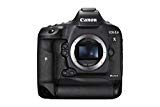 Canon EOS-1DX Mark II DSLR Camera (Body Only)
Canon EOS-1DX Mark II DSLR Camera (Body Only)
- Fastest shooting EOS-1D, capable of up to 14 fps full-resolution RAW or JPEG, and up to 16 fps in Live View mode with new Dual DIGIC 6Plus Image Processors
- Achieves a maximum burst rate of up to 170 raws in continuous shooting at up to 16 fps, and 4K movies using CFast cards in the new CFast 2.0 slot
- Improved AF performance through 61-point, wide area AF system with 41 cross-type points, improved center point focusing sensitivity to -3 EV and compatibility down to f 8
- Turn your Canon camera into a high-quality webcam Learn more: Canon.us livestream
- Use the EOS Utility Webcam Beta Software (Mac and Windows) to turn your Canon camera into a high-quality webcam, or do the same using a clean HDMI output.
Related
Is The Canon EOS R Good For Sports Photography?
The short answer to this question is yes. It has fast continuous shooting and a maximum shutter speed of 1/8000s. It also comes with a good low light ISO and has a wireless connection. However, there is one big downside to this model, the lack of image stabilisation.
While the image stabilisation may require some additional skill, we must mention that the camera body can be more affordable than some of the other professional models laid out in this overview.
Finding the optimal camera for your needs is often a matter of looking at your subjects and their requirements. Evidently, sports photography will require faster focus and tracking than a camera that is used to photograph portraits. So, do not always choose the most expensive camera out there with the belief that it will be the one that will provide maximum result.
After all, photography is a delicate blend of skill, the right equipment, but also the ability to use the right lenses and accessories in a variety of situations. If you are just starting out with photography, always do a little bit of research or even ask a fellow photographer for some advice where camera choice is concerned.
You can always start with the more basic cameras and lenses, and then later expand on the collection you have. Being a photographer can be expensive, but it can cost less if you make smart decisions about camera, accessories, and lens purchases.
So, be sure to use our comprehensive overview to save yourself some cash.
